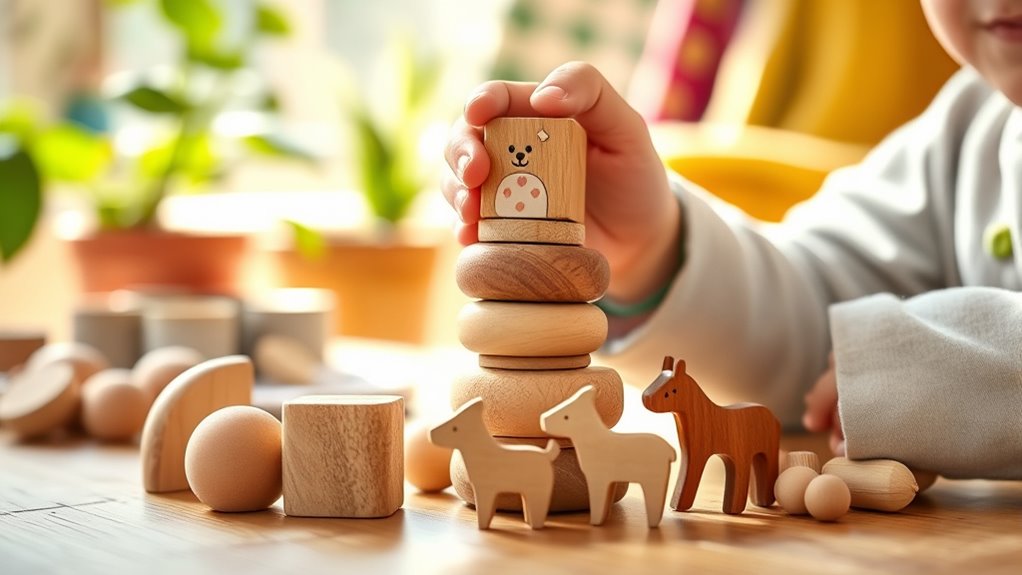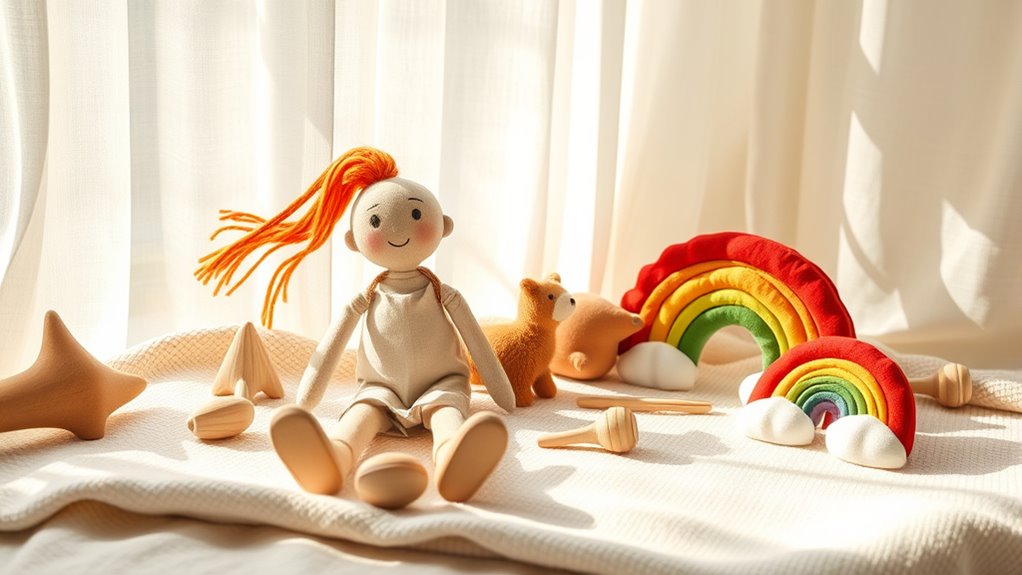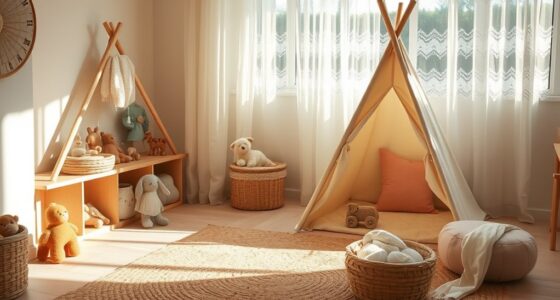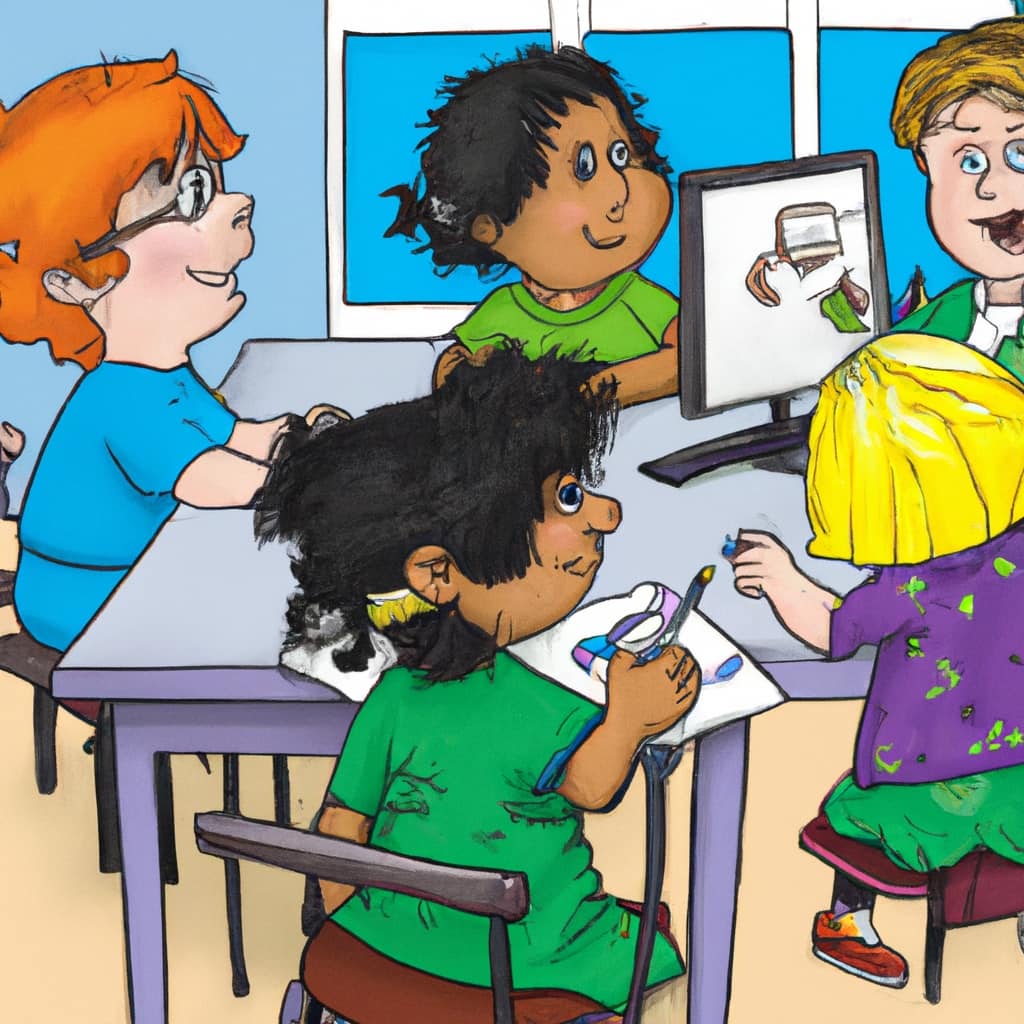Waldorf toys help you foster your child’s imagination and creativity because their open-ended design encourages exploration and self-expression. These toys, made from natural materials, invite your child to transform them into anything they imagine, boosting problem-solving skills and inventiveness. By playing freely, your child develops emotional regulation and confidence. If you keep exploring, you’ll discover how these timeless toys support your child’s growth in endless meaningful ways.
Key Takeaways
- Waldorf toys’ open-ended design encourages children to use their imagination and reimagine play scenarios creatively.
- Natural materials stimulate sensory exploration, inspiring inventive ideas and fostering creative thinking.
- Simple, versatile toys allow children to transform objects into various imaginative creations, enhancing problem-solving skills.
- Durable and safe, Waldorf toys provide a reliable foundation for sustained creative play over years.
- Engaging with Waldorf toys nurtures emotional expression and confidence through unrestricted, self-directed imaginative activities.

Waldorf toys offer numerous benefits that support a child’s development and creativity. As you explore these toys, you’ll quickly notice how they foster essential skills that lay the foundation for lifelong learning. One of the key areas they enhance is sensory development. Unlike brightly colored plastic toys with flashing lights and sounds, Waldorf toys often feature natural materials like wood, wool, and silk. These textures invite your child to touch, feel, and explore, stimulating their senses in a gentle, engaging way. When your child manipulates a smooth wooden block or cradles a soft felted animal, they’re honing their tactile perception, which is vital for understanding the world around them. This sensory input not only sharpens their awareness but also helps regulate emotions and focus.
Waldorf toys nurture sensory development through natural textures like wood, wool, and silk, engaging your child’s senses gently and effectively.
Alongside sensory development, Waldorf toys play a significant role in building motor skills. These toys usually require your child to use their hands and fingers in precise ways, such as stacking blocks, threading beads, or balancing figures. This active manipulation strengthens fine motor skills, improving hand-eye coordination, dexterity, and spatial awareness. For example, when your child carefully places a wooden peg into a hole or strings a bead onto a cord, they develop the precision necessary for writing, drawing, and other school-related activities. These movements also support gross motor development, especially when they involve larger toys like wooden horses or climbing structures, encouraging physical activity, balance, and coordination. Additionally, engaging with well-designed toys can foster patience and concentration during play.
What makes Waldorf toys particularly effective is their open-ended nature. They don’t come with preset functions or limited ways to play. Instead, they invite your child to imagine, create, and experiment. This freedom allows their creativity to flourish as they turn a simple wooden block into a spaceship or a castle. As your child engages with these toys, they develop problem-solving skills and an inventive mindset, which are essential for cognitive growth. Moreover, because these toys are designed to be safe and durable, they can be used in countless ways over many years, supporting your child’s development through various stages.
In essence, Waldorf toys are more than just playthings—they are tools that nurture sensory development and motor skills while encouraging imagination. By choosing these thoughtfully crafted toys, you help your child build a solid foundation for learning, emotional regulation, and creative expression that will benefit them for years to come.
Frequently Asked Questions
Are Waldorf Toys Suitable for Children With Allergies?
You might wonder if Waldorf toys are suitable for children with allergies. Generally, they are, since they’re made from hypoallergenic materials and natural fiber options like wool, cotton, or wood. However, always check labels and choose toys crafted with allergy-friendly ingredients. By doing so, you guarantee your child can enjoy these beautifully made toys without concerns about allergic reactions, making playtime safe and delightful.
How Do Waldorf Toys Support Emotional Development?
You might find it surprising, but Waldorf toys play a key role in supporting emotional development. They encourage emotional recognition by allowing your child to explore and express feelings through open-ended play. As they interact with simple, natural toys, they develop empathy by imagining others’ perspectives. These toys help your child process emotions, build emotional resilience, and foster a compassionate understanding of the world around them.
Can Waldorf Toys Be Used for Group Play?
Yes, you can definitely use Waldorf toys for group play. They encourage group interaction and cooperative play, helping children develop social skills. These toys are simple and versatile, making them perfect for sharing and collaborative activities. By engaging with Waldorf toys together, children learn to communicate, take turns, and work as a team, fostering important social and emotional skills in a natural, enjoyable way.
Are Waldorf Toys Environmentally Sustainable?
You’ll find that Waldorf toys are generally environmentally sustainable due to their eco-friendliness and mindful material sourcing. They’re often made from natural, renewable resources like wood, cotton, or wool, which reduces environmental impact. Plus, manufacturers prioritize sustainable practices, ensuring that each toy’s production supports eco-consciousness. So, by choosing Waldorf toys, you’re supporting eco-friendly options that respect the planet and promote responsible material sourcing.
How Do Waldorf Toys Compare to Electronic Toys?
Did you know that children spend over 7 hours daily on digital stimulation? Compared to electronic toys, Waldorf toys emphasize sensory engagement over screens. You’ll find that Waldorf toys promote hands-on play, nurturing creativity and imagination. They encourage real-world exploration, helping your child’s development in ways digital devices can’t match. Choosing Waldorf toys means less screen time and more meaningful, tactile experiences, fostering deeper learning and emotional growth.
Conclusion
Think of Waldorf toys as tiny seeds planted in your child’s mind. With each play, they sprout into vibrant gardens of imagination and creativity, blossoming into unique stories and ideas. By choosing these toys, you nurture a landscape where curiosity flourishes and dreams take root. Ultimately, you’re not just giving a toy—you’re cultivating a future of endless possibilities, where your child’s inner world blooms as beautifully as a well-tended garden.











